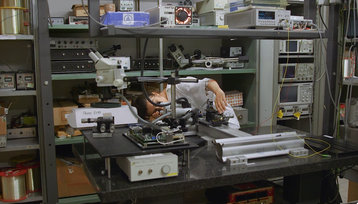EU-funded researchers are incorporating Vertical Cavity Surface Emitting Lasers (VCSELs) with silicon photonics to develop long wavelength, high capacity communications.
The technology could potentially allow for transmission rates of up to 112Tbps in Metropolitan Area Networks (MANs). VCSELs are already found inside data centers, but only for transmitting data over short-distance connections.
A passion project
The research group, funded by the European Commission’s Horizon 2020 program and the Photonics Public Private Partnership, calls itself ‘PASSION.’
It consists of 14 partners: Politecnico di Milano, SM Optics, CTTC, Telefonica, VLC Photonics, Technische Universiteit Eindhoven, Effect Photonics, VTT, Vertilas, OpSys Technologies, EPIC, NICT, ETRI and ChemOptics.
“VCSELs are a bit of a buzzword at the moment,” project coordinator professor Pierpaolo Boffi said. “They have the advantages of low driving current, high light-power conversion efficiency and high directivity. This makes them an ideal choice for transmitting huge amounts of data in a low-cost, energy efficient way.
“Our researchers are developing a flexible network architecture that will be optimized for metropolitan applications based on aggregated signal flows. A tenfold reduction in power consumption will be achieved by exploiting the full wavelength spectrum and the space dimension in a multi-core fiber.”
He added: “PASSION will come up with new transmission, detection, and routing solutions as well as an advanced network architecture based on innovative laser sources. These solutions ensure a transmission rate of more than 100 Tb/s per link and a switching capacity of over 1Pb/s per node.”
VCSELs are also increasingly finding their way into consumer products, for example as the face scanning technology on the iPhone X.

